Bass draw amateurs and pro anglers to various inland lakes, ponds, and streams throughout the country. If you’re a first-timer planning to go for a fishing trip to catch this most sought-after fish, there are some things you need to consider.
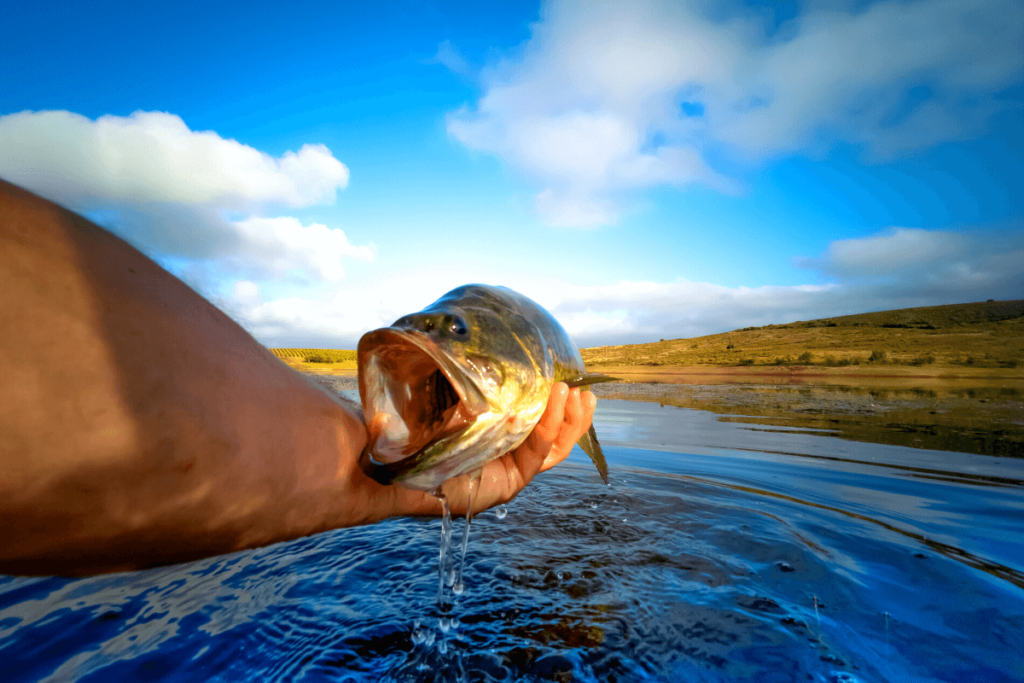
After landing bass with your fishing line, you’ll want to know if it has teeth. And if it does, how can you hold bass to avoid its injuries or harming the fish after releasing it?
In this article, we strive to answer your question, “Does bass have teeth?” and how to safely handle bass after catching it.
Does Bass Have Teeth?
Bass, like most freshwater fish, have teeth. But unlike other predatory fish such as walleye, lunge, northern pike, or shark, bass’ teeth are not meant to tear and kill prey. Their teeth are needle-like and tiny, designed to hold onto the struggling prey.
If you put your finger inside a bass mouth and its jaws, you’ll notice small and sharp teeth. Bass’ teeth will feel more like rough sandpaper than actual teeth.
Bass species such as largemouth, smallmouth, striped, rock, and peacock bass have different teeth sizes. When fishing for bass, it’s crucial to know the species you have caught.
Some bass species have big, sharp teeth that can cut or tear open the outer layer of your skin. However, the teeth are a few millimeters long and won’t cause significant damage to your hand or fingers.
The teeth on the lower and upper lips grasp the prey. Lower lip teeth are inside the mouth and curve inward. These teeth help the bass maintain the grip on the struggling prey. After securing the prey, the bass forces it back into the mouth towards another set of grinding teeth.
While each species of bass have varying diets, their teeth are designed for hunting insects, smaller prey fish, and crayfish.
Now that you have the answer to “does bass have teeth?” let’s learn more about the teeth of various bass species.
Largemouth Bass
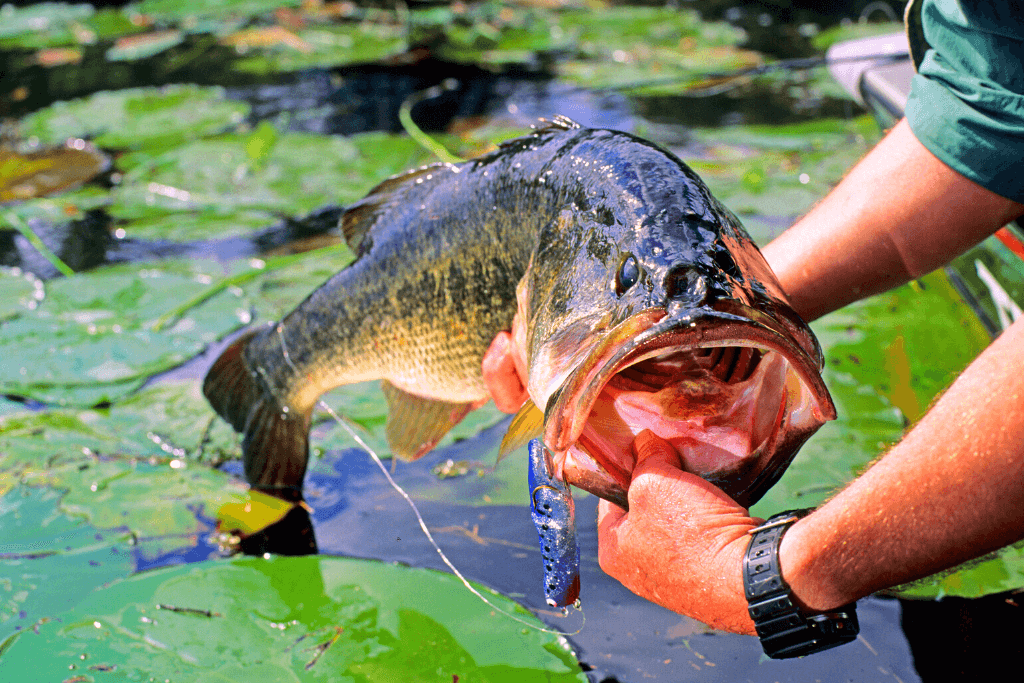
Largemouth bass have small, sharp teeth lined up on their upper and lower jaw. Their teeth are similar to a raspy raw with a sandpaper-like texture but aren’t likely to cause serious harm to your hand or finger.
While largemouth bass is a voracious predator, its teeth won’t tear or cut their prey. Instead, they will grab and hold the prey before forcing it to the back of its mouth. Largemouth bass have secondary jaws back into the mouth used to grind the prey.
Smallmouth Bass
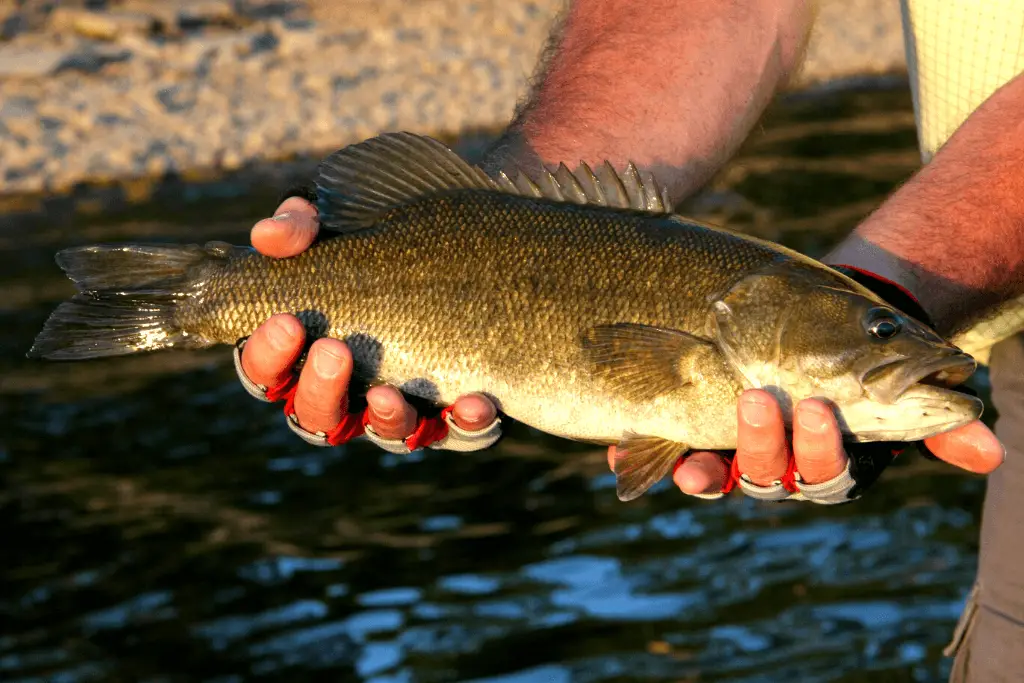
The teeth of the smallmouth bass are almost similar to the largemouth variety. Upon catching it, you’ll see tiny, sharp teeth lined up on its upper and lower jaws, with a sandpaper-like texture.
Unlike largemouth bass, the smallmouth has fewer mouth parts designed to grab and hold smaller prey.
Smallmouth bass forces the prey further towards the secondary jaws for grinding. Despite having fewer mouth parts, the smallmouth is still an aggressive predator and may cause minor abrasions to your hand or finger if not held securely.
Striped Bass
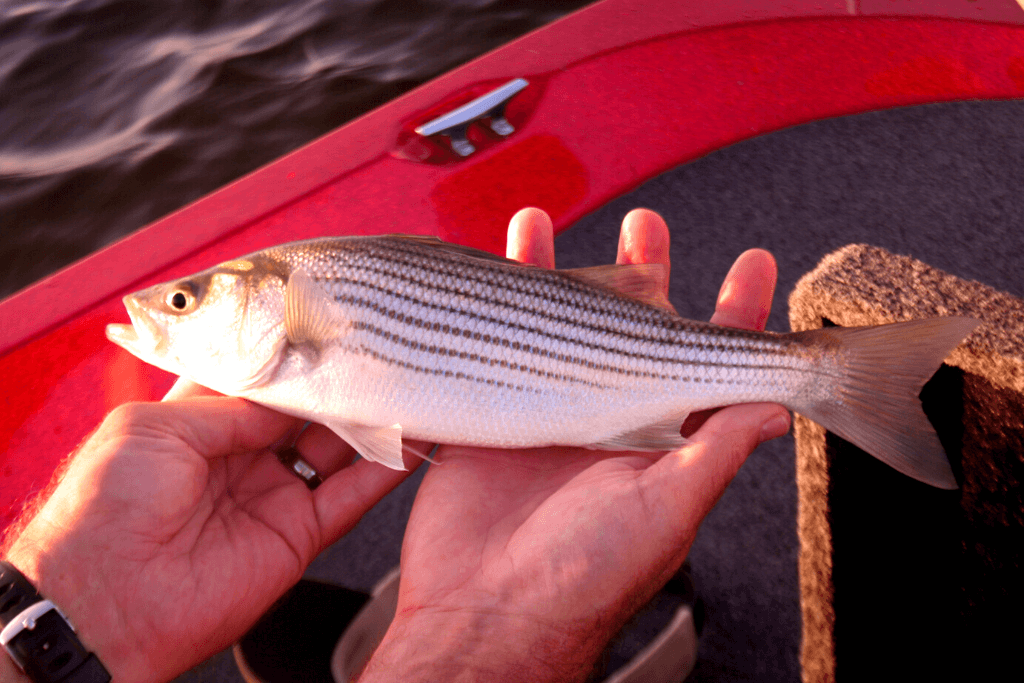
Striped bass is an aggressive predator that can grow bigger than the largemouth and smallmouth varieties. However, its teeth resemble those two types, meaning they are best suited for grabbing and holding struggling prey.
Striped bass can cut or tear open the outer layer of your skin if not handled safely. Fortunately, the minor abrasion shouldn’t be too serious.
Rock Bass
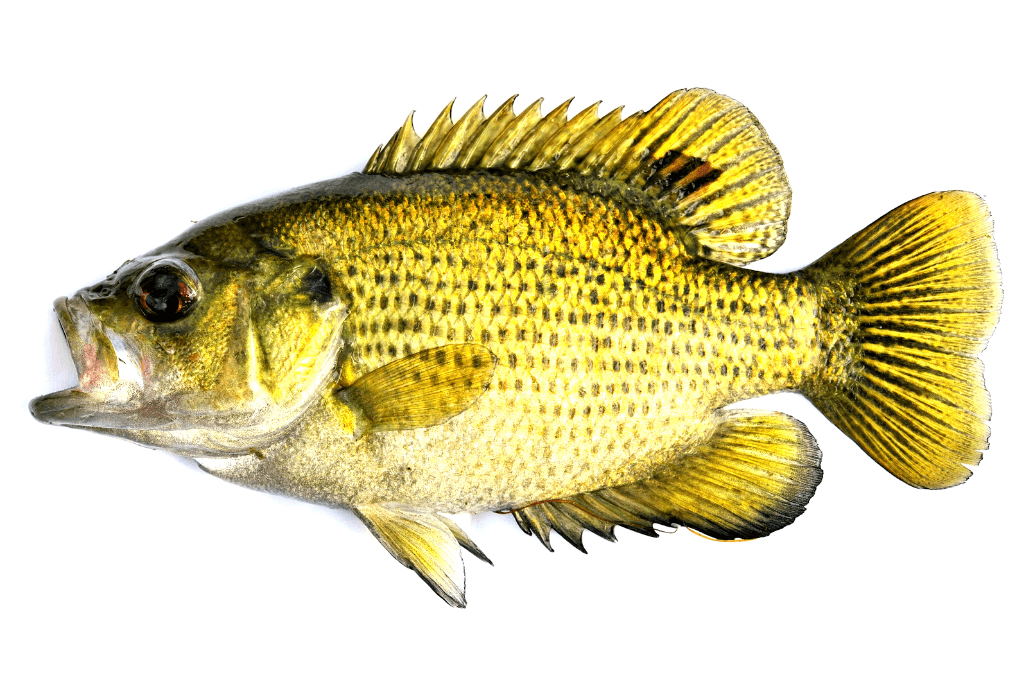
Rock bass is small in size with tiny teeth that you may not see easily. Nevertheless, the fish is well muscled and aggressive. If not appropriately held, a rock bass can flop around and tear the skin of your thumb. Indeed, this fish is known to cause severe injuries to your finger compared to other bass species.
This type of bass often lurks near rocky patches and boulders where smallmouth bass hunt. When fishing, the rock bass will compete and steal the bait of its smallmouth counterpart.
Peacock Bass
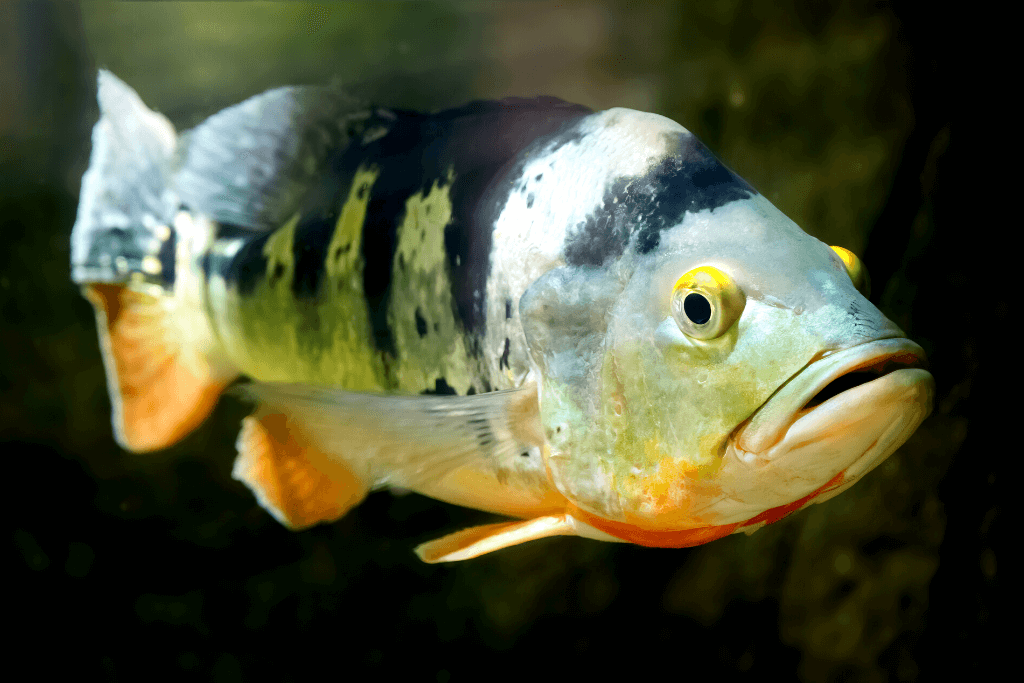
Peacock bass has powerful jaws and rows of tiny, raspy teeth that are densely packed to enable them to grab and crush prey.
The peacock is one of the most challenging fish to catch as it can grab your lure and get away with it. When holding a peacock bass, it’s advisable to use a thumb protector to avoid a “bass thumb.”
How to Safely Handle Bass
You’ve probably seen professional anglers slipping a thumb inside the bass’ mouth to hold it. And now that you know bass have teeth, you must be wondering whether the practice is safe or not.
The truth is, it’s perfectly safe to place your thumb into the mouth of a bass. However, you’ll likely get minor abrasions (“bass thumb”) on your skin when the fish flops around.
While most people advise anglers to “lip” all bass species, it’s vital to consider the size and teeth of the fish you’ve caught.
So, how should you handle bass? Here are the safest bass handling methods to use for your prized catches.
Vertical Hold
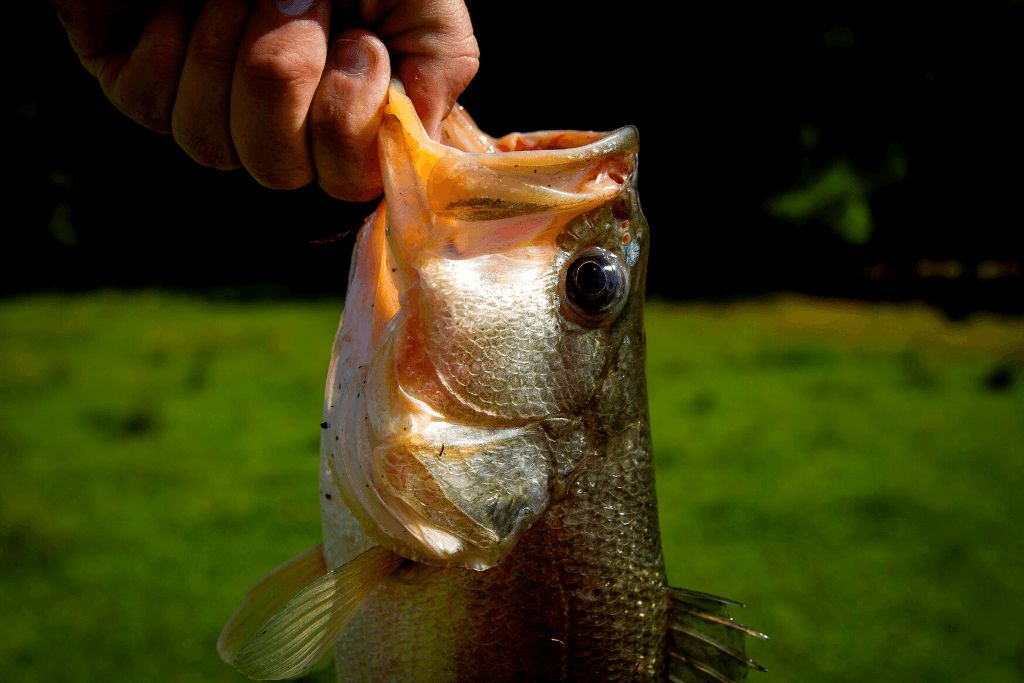
Vertical hold involves putting your thumb in the bass’ mouth to hold the lower lip while using the other fingers to secure the outer part of the lower lip. Ensure the fish is vertical, with its mouth facing straight up and tail facing downwards.
A vertical hold puts no strain on its jaws as the body remains vertical. Check you’ve placed your thumb firmly on the bass’s lower lip to avoid dropping it. The firm grip should only help hold the fish and not injure it.
An incorrect angle can damage your prized catch’s lip, teeth, and slime coat. If you’re planning to release the fish into the wild, it’s important to handle bass carefully as an injury may lower its chances of survival.
The vertical hold is not the safest method for holding a bass weighing more than four pounds. You don’t want to cause severe damage or dislocate the lower jaw of your prized catch.
Horizontal Hold
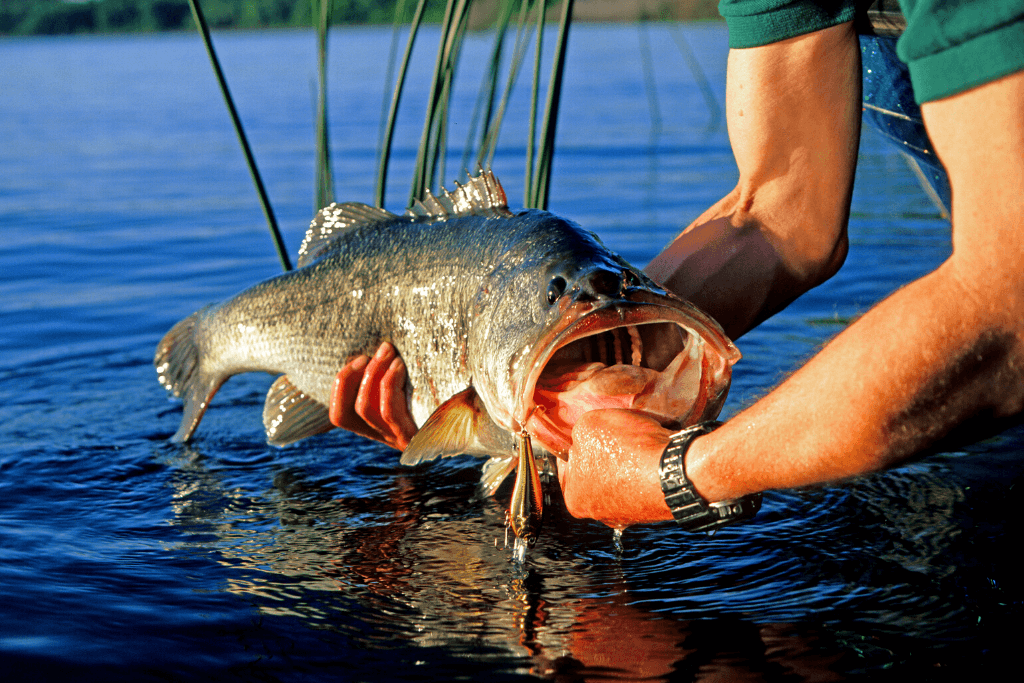
Would you like to take a pic of your prized catch before releasing it? The horizontal hold is the safest method of securing a bass without putting too much pressure on its bottom jaw. This technique involves gripping the lower lip, similar to a vertical hold.
The difference between the two methods is that the horizontal hold needs you to place the other hand under the bass’ anal fin or tail base area. Your thumb holds one side while the other fingers hold the opposite side. Keep the fish horizontally, but ensure its head is slightly above the body.
A horizontal hold guarantees a firm hold that prevents your prized catch from escaping into the wild before you’ve captured its visual appeal. It also prevents damaging the lower jaw, teeth, and slime coat. You can rest assured to safely hold a heavy bass without causing severe damage.
Avoid holding your bass for long if you plan to release it.
After learning how to hold bass, it’s now time to look at the best fishing lines for bass fishing.
Fishing Line for Bass Fishing
Using the right fishing line can be the difference between an angler who catches the biggest bass and the one who returns home empty-handed. After all, it’s all too easy for a bass fishing trip to end with losing a prize catch because of a poor-quality fishing line.
Below are the three best fishing lines for bass fishing:
Braided Fishing Line
A braided fishing line is suitable for anglers interested in big bass. The overall strength, length, and small diameter allow you to cast your fishing line far, including the more wooded locations where bass hide.
Unfortunately, braided lines can be susceptible to abrasion cuts, especially by big bass that can put up a good fight. Additionally, the line is more visible in water and could scare the bass away.
Monofilament Fishing Line
Most anglers prefer using a monofilament line on fishing trips because it’s inexpensive, strong, stretchable, and easy to use. Monofilament is suitable for amateur and skilled anglers.
Unlike a braided fishing line, monofilament has low visibility on water and won’t deter your trophy fish. The fishing line is buoyant, letting you catch bass that may come near the surface.
Fluorocarbon Fishing Line
Skilled anglers looking for their biggest catch of the year might want to consider the fluorocarbon fishing line. This line is the newest of the three options but comes at a higher price.
The fluorocarbon fishing line is sturdy, sensitive, crystal clear in the water, and will stretch a bit. Fluorocarbon will sink without scaring bass, giving you the opportunity to catch bass near the bottom.
Does Bass Have Teeth? Final Thoughts
So, does bass have teeth? Yes, this type of fish has teeth that are tiny, sharp, and likened to rough sandpaper. Bass teeth are designed to grab and hold but to tear and cut their prey.
When holding bass, it’s advisable to use safe holding methods such as vertical or horizontal hold. Failure to hold the bass properly could lead to a “bass thumb” or injure the bass. With this knowledge at hand, your next step is to pack up your gear and start fishing for bass.
- Do You Need An Indicator For Nymph Fishing? - November 16, 2023
- Fishing Safety Tips For Families - September 25, 2023
- What Is The Best Time To Night Fish At A Lake? - September 18, 2023


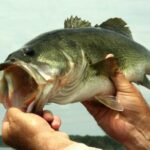


![Kayak Fishing for Beginners [10 Tips for a Successful Trip] fishing kayak moored on a beach](https://irvinelake.net/wp-content/uploads/2022/12/kayak-fishing-for-beginners-150x150.png)



